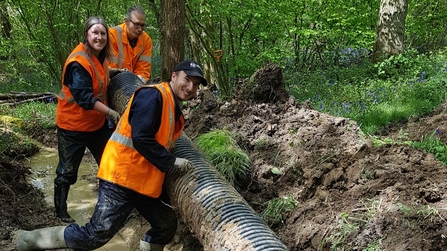Hi I’m Jess, one of the new conservation trainees. I can’t believe it has already been three months since I started on this adventure and I’ve been loving every minute!
I've made quite the leap, from working as a senior architect at Passivehaus Designer in a busy city office, to spending my days exploring and working on some of the most beautiful and special natural sites in Worcestershire. At first glance you might wonder 'what’s the connection'? Essentially I have always been passionate about environmental sustainability, with a strong belief that we all need to do our bit to protect this wonderful world that we share.
After studying and working for over 15 years in the built environment on healthcare, schools and university buildings, doing my best to encourage sustainable approaches in a commercial world, I found my life being consumed by the urban environment and I missed spending real time outside, connecting to nature. You shouldn't have to choose between city or nature, everyone deserves access to the natural world and a successful building should connect to the surrounding landscape (but this is often overlooked or cut from the budget). If we don't prioritise looking after nature now, then there will be nothing left for us to connect back to!


